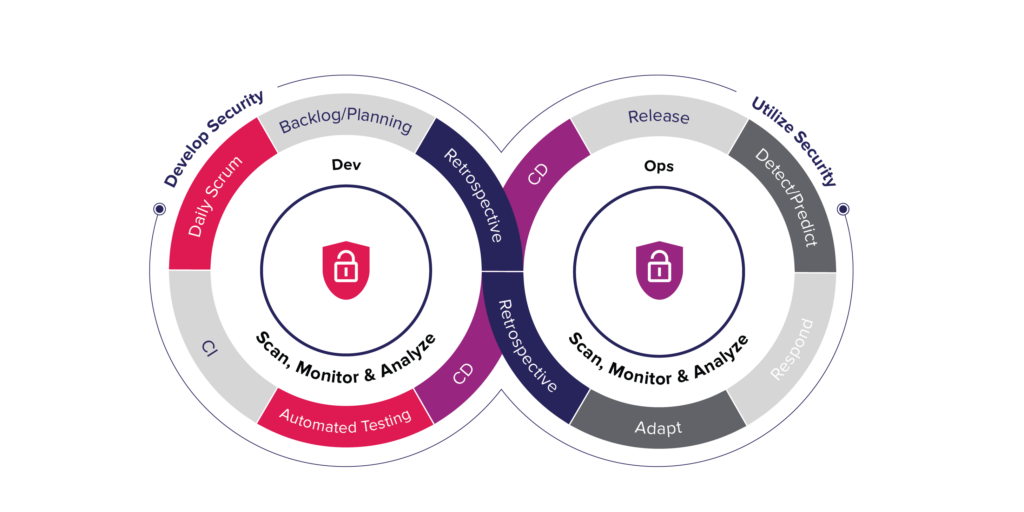Achieving Continuous Authority to Operate (ATO)
In this blog, you will learn about the benefits of cATO and how DevSecOps helps in achieving continuous authority to operate
What is Authority to Operate (ATO)?
Authority to Operate is usually described as the authorization or approval given for a network, system, or application to operate in a determined environment. Generally, an ATO is granted when an application or an organization’s IT system has achieved all the security and risk management standards needed to consider the application or system safe to operate within the destined environment. The ATO process involves a complete assessment of the application or system, including an evaluation of its security controls, and is often used in the federal government.
What is Continuous ATO (cATO)?
As described earlier, ATO is the process of providing approval for an application or system regarding its security and functionality. ATO uses a static principle in which the application or system is authorized once. But later when changes are made to the system, these changes are often not accounted for in the ATO’s security monitoring, increasing the chances of vulnerabilities inside the intended environment.
This drawback of ATO was addressed as a commentary in Federal Computer Week, which explains the present status of ATO:
“The muddled, bureaucratic process to obtain an ATO and launch an IT system inside the government is widely maligned — but beyond that, it has become a pervasive threat to system security. The longer the government takes to launch a new-and-improved system, the longer an old and potentially insecure system remains in operation.”
— Mary Lazzeri, ATO ASAP
Continuous authority to operate (cATO) is the fix for this security compliance problem. cATO is the continuous authorization of the application or system, ensuring the security level is maintained throughout the entire development process of the application and its components using DevOps technologies.
Here, the application or system is authorized once but monitored continuously, gaining more visibility on all the assets and security of the application, thus reducing the chances of security threats.
The Role of DevSecOps in Continuous Authority to Operate
Federal agencies spend a lot of resources to get ATO approval for applications and systems. The approval process for ATO includes collecting plenty of information to build an ATO package. This package is finally submitted for approval.
The approval process for ATO is a seemingly endless process, and it also requires thorough research and documentation. But federal agencies are looking for ways to make this approval process faster, more automated, and more efficient. This can be achieved by implementing two methodologies: Continuous ATOs and DevSecOps.
So how does the DevSecOps approach help enable continuous ATOs and ease the ATO approval process?
The DevSecOps approach supports faster development and deployment of the application. This faster development and deployment, on the other hand, brings in the challenge of security, which can be addressed only with continuous ATOs.
Let us see how we can succeed in choosing DevSecOps and cATO as the solution.
How to Succeed with DevSecOps
Continuous deployment does not have to be impacted by cybersecurity.By employing a secure, lean agile application development process with DevSecOps, Continuous ATO can be achieved as one of its primary end results.
Agencies gain trust in the entire process due to visibility and transparency by adhering to cATO. The tricky part here is involving security in all parts of the process.
DevSecOps can be used to improve application delivery by migrating code from development to deployment and by regularly examining both functional and security vulnerabilities throughout the process, as shown in the graphic below.

We recommend these four steps to achieve continuous ATO with DevSecOps successfully.
Step 1: Security Training
The important groundwork to get started is providing security training, which increases trust and communication. The testers are trained and are given a complete overview of the technology used and the security process. Later, they are given access to the required tools to track all the security controls of the application in the development process. This speeds up the time of delivery.
Step 2: PaaS Implementation
A high level of control inheritance in Platform as a service (PaaS) is important for DevSecOps adoption and implementation of cATO. The usage of PaaS makes it cost-efficient, time-efficient, and also helps in reducing the complexity of the monitoring process.
Step 3: Continuous Review
Later the focus turns to running security scans and to the DevOps pipeline. The security scan checks for vulnerabilities, overall code coverage, and dependencies while the DevOps pipeline concentrates on the release processes. Meanwhile, the security team does a periodic scan of the application or the system.
Step 4: Unleashing AIOps Data Capabilities
The final step is a crucial step that allows us to maintain trust and high security. Artificial Intelligence for IT Operations (AIOps) helps to maintain security in all the processes, including onboarding, employee training, hiring, and so on. This approach continuously helps to maintain the security and quality of the application or the system both in the development and the deployment process.
Return on Investment of Continuous ATO
After implementing all four steps mentioned earlier, we can finally automate the process of continuous ATO processes with the help of DevSecOps. It enhances the overall security of the application or the system throughout the delivery lifecycle.
It makes use of advanced technologies to perform security testing in the development and deployment phases, increasing visibility and reducing the chances of vulnerabilities. This approach also streamlines the process, making the ATO approval more time-efficient.
What Relevantz Can Do for You
We help customers manage skill complexity, delivery risk, the regulatory landscape, cost efficiency, automation, and innovation through outsourcing maintenance of existing infrastructure, infra support, cloud, and agile managed services.
And our hire and support model helps protect the domain knowledge of your existing workforce and helps to address the talent gap.
Want to introduce cATO to your enterprise?
